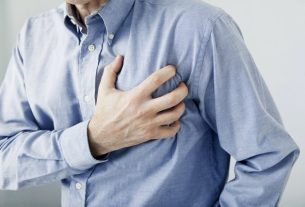Symptoms of kidney stones are severe pain in the back or side of the body, cramping, nausea, vomiting, pain or burning when urinating, which can appear suddenly, especially when the stone begins to move towards the ureter. , bladder or urethra, or it is too large and gets stuck in the kidney.
It is important to seek medical help immediately or the nearest emergency room whenever symptoms of kidney stones appear, so that diagnostic tests can be carried out and the most appropriate treatment can be started, to avoid complications such as obstruction of the passage of urine, which can accumulate in the kidney and cause kidney swelling or kidney infection. Check out the main tests recommended to confirm kidney stones.
Check out some kidney stone symptoms with Dr. Bruno Zawadzki:
Main symptoms
The main symptoms of kidney stones are:
1. Severe lower back pain
Kidney stone pain is intense, affecting the lower back or side of the body, and usually occurs when the stone is very large and becomes stuck in the kidney or when the stone leaves the kidney and begins to descend towards the kidney. ureter or bladder.
This pain is often described as being similar to labor pain, and can also cause difficulty moving the body.
However, although it is less common, kidney stone pain can also be felt as a sensation of pressure in the lower back or side of the body.
Don’t ignore the signs your body is giving you!
2. Sharp pain that may radiate to the groin or abdomen
Kidney stone pain appears suddenly and can be so intense that it can radiate to other parts of the body, such as the groin, for example. In the case of men, the pain can radiate to the testicles and, in women, to the vagina.
Additionally, as the stone descends, pain may appear in the lower abdomen.
3. Spikes in intense kidney colic
Renal colic can occur in intense peaks of pain that come and go, which can last around 20 to 60 minutes, and generally appear when the stone becomes stuck or blocks some part of the urinary tract, such as the kidneys, ureter or bladder.
4. Nausea and vomiting
Kidney stones can cause nausea and vomiting, which is a very common symptom, and occurs due to stimulation of the splanchnic nerve, which is an innervation shared by the lining capsule of the kidneys and the stomach.
5. Pain or burning when urinating
Pain or burning when urinating may be a sign of a urinary tract infection, which may be caused by the stone moving in the urethra to be eliminated through urine or by blocking the passage of urine. See other symptoms of urinary tract infection.
6. Need to urinate frequently
Kidney stones can cause a need to urinate frequently or an urgency to urinate, which usually occurs when the stone approaches the vesicoureteral junction, which is the part that joins the ureter and the bladder.
7. Decrease in the amount of urine
Decreased amount of urine or inability to urinate may occur when the stone totally or partially blocks some part of the urinary tract, such as the ureter, bladder or urethra.
This can cause urine to become trapped in the kidneys, leading to their swelling, which is called hydronephrosis, or cause a kidney infection, known as pyelonephritis, for example.
8. Presence of blood in the urine
When kidney stones move, they can cause damage to the cells lining the urinary tract, which can lead to the appearance of small amounts of blood in the urine. However, this symptom is generally more related to the stone passing through the urethra to be eliminated through urine, or a urinary infection.
9. Cloudy or foul-smelling urine
Kidney stones can also change the color of the urine, which may become more cloudy, concentrated or have a bad smell and, normally, this symptom is related to a urinary tract infection or kidney infection.
10. Fever or chills
Fever or chills may also appear as a sign of kidney infection caused by kidney stones or urinary tract infections.
Kidney Stone Symptoms Online Test
To find out the chance of having kidney stones, select the symptoms presented in the test below:
The symptom test is only a guidance tool and does not serve as a diagnosis and does not replace consultation with a nephrologist.
Why does the pain usually return?
After a crisis, it is common to feel pressure, slight pain or burning when urinating, symptoms that are related to the release of remaining stones that the person may have, and the pain may return with each new attempt by the body to expel the stones.
In these cases, you should drink at least 2 liters of water a day and take medicines that relieve pain and relax muscles prescribed by your doctor during the previous crisis. However, if the pain becomes stronger or does not improve after 2 hours of taking the analgesic, you should return to the emergency room so that further tests can be carried out, if necessary, and treatment can be started to relieve symptoms. .
Discover other ways to relieve back pain depending on its cause.
Kidney stone treatment
Treatment during a kidney stone crisis must be indicated by a urologist or general practitioner and is normally carried out through the use of analgesic medicines, such as dipyrone or paracetamol, and antispasmodic medicines, such as scopolamine. When the pain intensifies or does not go away, the person must seek emergency care to take medication into the vein and, after a few hours, when the pain improves, the patient is discharged.
At home, treatment can be maintained with oral analgesic medications, such as paracetamol, rest and hydration with around 2 liters of water per day, to facilitate the stone’s removal.
In more serious cases, where the stone is too large to come out on its own, surgery or laser treatment may be necessary to facilitate its removal. However, during pregnancy, treatment should only involve analgesics and medical supervision. See all types of treatment for kidney stones.

Sign up for our newsletter and stay up to date with exclusive news
that can transform your routine!
Warning: Undefined array key "title" in /home/storelat/public_html/wp-content/plugins/link-whisper-premium/templates/frontend/related-posts.php on line 12
Warning: Undefined array key "title_tag" in /home/storelat/public_html/wp-content/plugins/link-whisper-premium/templates/frontend/related-posts.php on line 13




